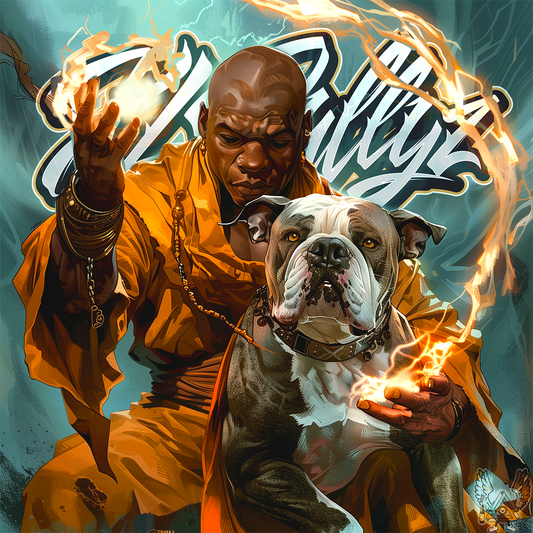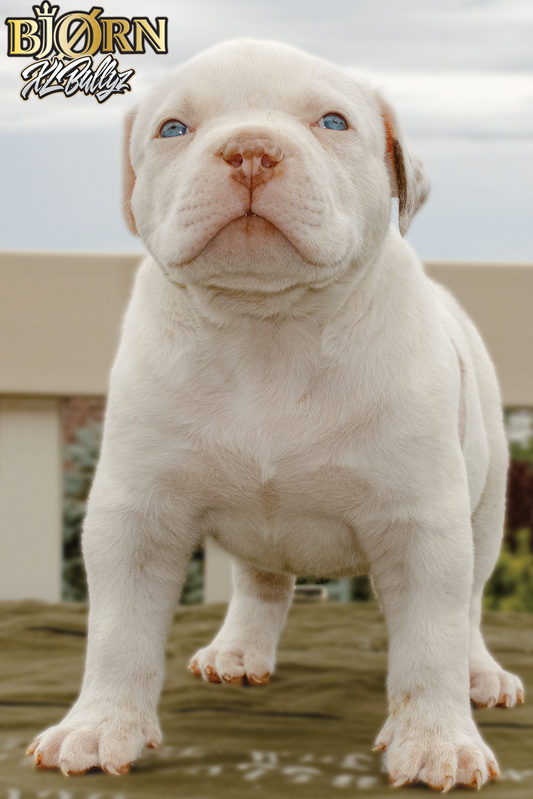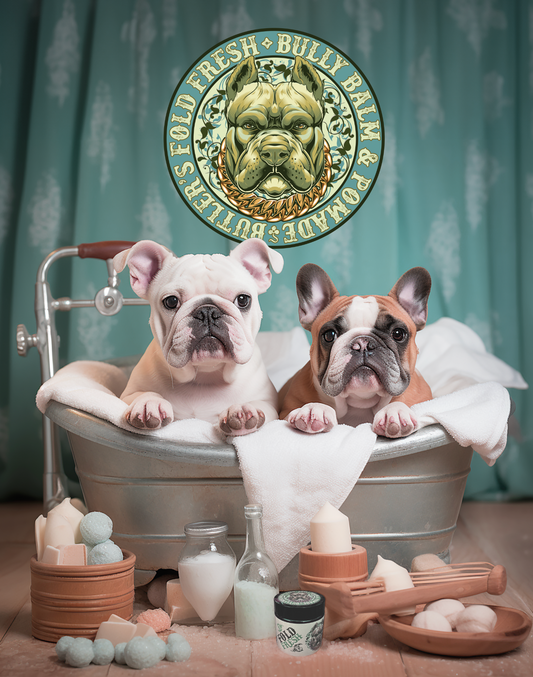
Understanding the Distinction: ABKC Registered XL American Bully Dog vs. XL American Pit Bull Terrier Dog
Share
Table of Contents:
- Introduction
- What Is an ABKC Registered XL American Bully Dog?
- 2.1. History and Origins
- 2.2. Physical Characteristics
- 2.3. Temperament and Behavior
- 2.4. Purpose and Uses
- What Is an XL American Pit Bull Terrier Dog?
- 3.1. Historical Origins
- 3.2. Physical Characteristics
- 3.3. Temperament and Behavior
- 3.4. Purpose and Uses
- Comparing the Two Breeds
- 4.1. Physical Differences
- 4.2. Temperamental Contrasts
- 4.3. Suitable Environments
- Caring for ABKC Registered XL American Bully Dogs and XL American Pit Bull Terriers
- 5.1. Health Considerations
- 5.2. Exercise and Training
- 5.3. Nutrition and Grooming
- Misconceptions and Controversies
- Conclusion
1. Introduction
Dog enthusiasts around the world have long been captivated by the grace and strength of both the ABKC Registered XL American Bully Dog and the XL American Pit Bull Terrier Dog. While their appearance may share some similarities, they have distinct histories and serve different roles in the lives of their owners. In this guide, we will explore the roots, characteristics, temperaments, and purposes that set these two breeds apart.
2. What Is an ABKC Registered XL American Bully Dog?
2.1. History and Origins
The ABKC Registered XL American Bully Dog is a relatively modern breed, stemming from a lineage of various bulldog and terrier breeds. Here's a glimpse into their history:
- Emergence in the Late 20th Century: The American Bully breed started to take shape in the late 20th century when breeders aimed to create a companion breed known for its gentle disposition and loyalty. It's essential to note that they share ancestry with the American Pit Bull Terrier but have distinct breeding goals.
- Selective Breeding: American Bully breeders selectively bred dogs to emphasize traits like a friendly temperament, a muscular and stocky build, and a broad skull. This selective breeding aimed to produce dogs that would make excellent family pets.
- ABKC Recognition: The American Bully Kennel Club (ABKC) played a significant role in the breed's recognition and standardization. ABKC-registered American Bullies adhere to specific breed standards, ensuring uniformity in appearance and temperament.
2.2. Physical Characteristics
ABKC Registered XL American Bully Dogs have several distinctive physical characteristics:
- Size: These dogs come in various size categories, including standard, pocket, classic, and XL. The XL American Bully is known for its substantial size and impressive muscular build.
- Coat: American Bullies boast a short, glossy coat that requires minimal grooming. Their coat comes in a wide range of colors and patterns.
- Head: They have a broad and blocky head, often referred to as a "bullier" head type. The skull is typically large and features strong jaw muscles.
- Ears and Tail: Ears can be cropped or left natural, and the tail can vary in length.
2.3. Temperament and Behavior
American Bullies are celebrated for their friendly and affectionate nature:
- Loyalty: They are devoted to their families and often form strong bonds with their owners.
- Gentleness: American Bullies are known for their gentle disposition, making them excellent family pets.
- Sociability: They are generally good with children and other pets when properly socialized.
2.4. Purpose and Uses
American Bullies excel as companion animals and family pets:
- Family Companions: Their gentle and affectionate nature makes them perfect companions for families of all sizes.
- Guardians: Their protective instincts make them reliable watchdogs, always ready to alert their owners to potential threats.
3. What Is an XL American Pit Bull Terrier Dog?
3.1. Historical Origins
The XL American Pit Bull Terrier Dog has a long history, dating back to the early 19th century:
- Origins in England: The breed's roots can be traced to England, where it was initially bred for bull-baiting—a now-banned bloodsport that pitted dogs against bulls.
- Transition to the United States: Immigrants brought their dogs to the United States, where they were utilized as all-around working dogs, herding livestock, and guarding property.
- Development in the U.S.: Over time, Pit Bull breeders in the U.S. shifted their focus from work to companionship, emphasizing the breed's loyalty and intelligence.
3.2. Physical Characteristics
XL American Pit Bull Terrier Dogs have distinct physical characteristics:
- Size: They are medium-sized dogs known for their muscular build and agility.
- Coat: Pit Bulls have short, sleek coats with a variety of color patterns.
- Head: Their head is well-defined but not as broad as that of the American Bully, featuring strong jaws.
- Ears and Tail: Pit Bulls typically have natural ears, and their tails are short and taper to a point.
3.3. Temperament and Behavior
Pit Bulls are recognized for their loyalty and intelligence:
- Loyalty: They are intensely loyal to their owners and often form deep bonds with their families.
- Intelligence: Pit Bulls are highly intelligent and can be trained for various roles, from search-and-rescue work to therapy dog duties.
- Socialization: When well-socialized, Pit Bulls are typically good with children and other animals.
3.4. Purpose and Uses
Pit Bulls have a history of versatility in various roles:
- Family Pets: They make excellent family pets, known for their love of children and their affectionate nature.
- Working Dogs: Pit Bulls have excelled in various working roles, from herding to hunting.
- Service Dogs: Some Pit Bulls are trained as service dogs, assisting individuals with disabilities.
4. Comparing the Two Breeds
4.1. Physical Differences
While both breeds share some physical traits, there are notable differences:
- Size: American Bullies, especially XL variants, are generally larger and heavier than XL American Pit Bull Terriers.
- Head: American Bullies have broader, blockier heads compared to the more streamlined heads of Pit Bulls.
- Ears and Tail: American Bullies may have cropped ears, whereas Pit Bulls typically have natural ears. Pit Bulls also have shorter tails.
4.2. Temperamental Contrasts
American Bullies are known for their gentle and affectionate nature, making them well-suited as family pets. Pit Bulls, on the other hand, are recognized for their loyalty and intelligence, which lends them well to a variety of roles, including working dogs and service animals.
4.3. Suitable Environments
Both breeds thrive in loving homes, but American Bullies are particularly well-suited for families looking for a companion animal, while Pit Bulls may excel in more active households or specific working roles.
5. Caring for ABKC Registered XL American Bully Dogs and XL American Pit Bull Terriers
5.1. Health Considerations
Both breeds can be prone to certain health issues, including hip dysplasia, skin allergies, and heart conditions. Regular veterinary check-ups and a balanced diet are essential for their well-being.
5.2. Exercise and Training
Both American Bullies and Pit Bulls require regular exercise and mental stimulation. Training should start early to ensure they grow up to be well-behaved pets. Positive reinforcement methods work well for both breeds.
5.3. Nutrition and Grooming
A healthy diet tailored to their size and activity level is crucial. Grooming requirements are minimal, thanks to their short coats. Regular brushing and nail trimming are typically sufficient.
6. Misconceptions and Controversies
Both American Bullies and Pit Bulls have faced negative stereotypes and misconceptions over the years. Breed-specific legislation has been a point of contention in various regions. Responsible ownership and education are essential in countering these misconceptions and advocating for these breeds.
7. Conclusion
In conclusion, the ABKC Registered XL American Bully Dog and the XL American Pit Bull Terrier Dog may share some physical similarities, but their histories, characteristics, and purposes set them apart. American Bullies are known for their gentle and affectionate nature, making them ideal family companions, while Pit Bulls are celebrated for their loyalty and intelligence, excelling in various roles. Regardless of the breed, responsible ownership, proper training, and regular care are crucial for the well-being of these wonderful canine companions. Understanding their unique qualities allows us to appreciate the distinct roles they play in the lives of their owners and the world of dogs.



